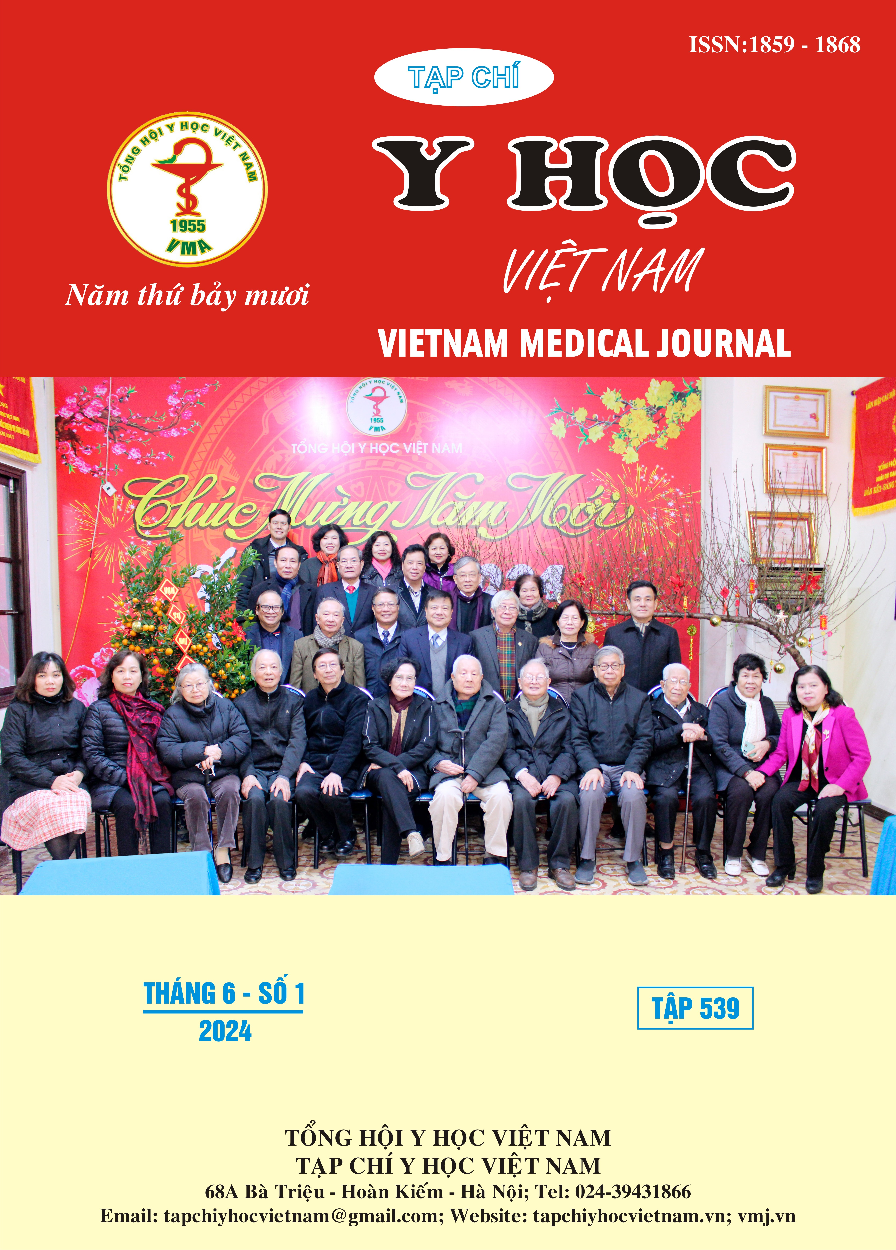UTILIZATION OF SGLT2 INHIBITORS IN HOSPITALIZED HEART FAILURE PATIENTS
Main Article Content
Abstract
To improve the outcome of heart failure, domestically and internationally current guidelines indicated Sodium-glucose-cortransporter-2 inhibitors (SGLT2i) for heart failure patients with reduced, midly reduced or preserved ejection fraction with or without diabetes. Objective: To survey the incidence and time of using SGLT2i in 3 groups: Reduced, mildly reduced and preserved ejection fraction. To describe the characters of patients on SGLT2i. Subjects and methods: Prospective, descriptive, cross-sectional study on heart failure patients admitted to the Cardiology Department of University of Medicine and Pharmacy Hospital in HCM city from May 2023 to August 2023. Results: Among 118 cases of hospitalization for heart failure 71 (60.2%) patients were using SGLT2i: HFrEF 78.3%, HFmEF 66.7%, HFpEF 41.2% (p<0.001). In term of prescribed day from admission, HFrEF after 2.7±1.8 days, HFmEF after 3.1±1.5 days, and HFpEF after 4.9±3.9 days. Taking SGLT2i on the first day hospitalization of HFrEF, HFmEF and HFpEF was 22.9%, 14.3%, 18.2% respectively (p<0,001). Using all four-pillar drugs was in the HFrEF 41.3%, HFmEF 14.3%, HFpEF 9.8% (p =0.02). the group using SGLT2i had HFrEF 49.3%, HFmEF 19.7%, HFpEF 31%. Age groups over and under 60 years old, gender, heart rate, hemoglobin, NT-proBNP, and the rate of using ARBi and ARNI drugs were differentiated between the group with and without SGLT2i. Conclusion: SGLT2 inhibitors was prescribed most and earliest in the HFrEF group while least and latest in the HfpEF group. There was a lot of difference between SGLT2 and non-SGLT2 group.
Article Details
Keywords
heart failure, reduced ejection fraction, mildly reduced ejection fraction, preserved ejection fraction, SGLT2 inhibition.
References
2. Bassi NS, Ziaeian B, Yancy CW, Fonarow GC. Association of optimal implementation of sodium-glucose cotransporter 2 inhibitor therapy with outcome for patients with heart failure. JAMA cardiology. 2020;5(8):948-951.
3. Dhaliwal A, Toma M, Kochan A, Didi A. Identifying barriers to SGLT2 inhibitor use In eligible patients with heart failure: a real-world experience from a single centre. Journal of cardiac failure. 2022;28(5):S48-S49.
4. Lippi G, Sanchis-Gomar F. Global epidemiology and future trends of heart failure. AME Medical Journal. 2020;5:15-15.
5. Meraz-Muñoz AY, Weinstein J, Wald R. eGFR Decline after SGLT2 Inhibitor Initiation: The Tortoise and the Hare Reimagined. Kidney360. Jun 24 2021;2(6): 1042-1047. doi:10.34067/ kid.0001172021
6. Myhre PL, Vaduganathan M, Claggett BL, et al. Influence of NT-proBNP on Efficacy of Dapagliflozin in Heart Failure With Mildly Reduced or Preserved Ejection Fraction. JACC Heart failure. Dec 2022; 10(12): 902-913. doi:10.1016/ j.jchf.2022.08.007
7. Vallon V, Thomson SC. Targeting renal glucose reabsorption to treat hyperglycaemia: the pleiotropic effects of SGLT2 inhibition. Diabetologia. 2017;60(2):215-225.


